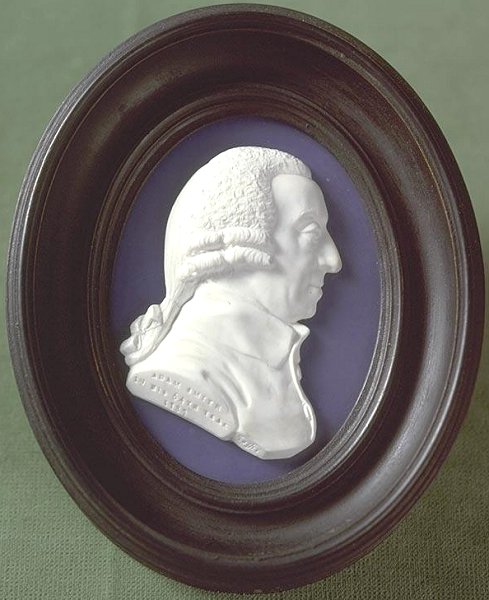A
side profile of Adam Smith. This is the only sure image of Adam
Smith (1723-90) made by James Tassie (1753-1799) the stonemason
and gem engraver. It was made in 1787. The profile is set in an
oval and is made of porcelain.
The
name of Adam Smith (1723-1790) is today synonymous with the economic
principle of free enterprise. His
most influential work, The Wealth of Nations, published in 1776,
described how the individual pursuit of self-interest leads to
the common good. In this book Smith also proposed labour, and
not land, as the source of national wealth and theorised the 'division
of labour' as a basis of production.
Smith
was, however, a more complex intellectual figure than his posthumous
popular reputation suggests. He was greatly influenced by Francis
Hutcheson, whom he followed as Professor of Moral Philosophy at
the University of Glasgow and he shared the ethical concerns of
his great friend, David Hume.
A
native of Kirkcaldy, Smith was briefly kidnapped by gypsies as
a child, but otherwise his private life was unremarkable and typical
of the many convivial characters of the Scottish Enlightment.
While travelling in France as the tutor to the young Duke of Buccleuch,
he met Voltaire and was a great hit with the ladies of the Paris
salons; in London he socialised with Samuel Johnson's circle and
in Edinburgh he founded a dining club with the two scientists,
Joseph Black and James Hutton.

©SCRAN/National
Galleries of Scotland
Portrait
medallion of Adam Smith, political economist (1723-90).
By James Tassie, 1787.